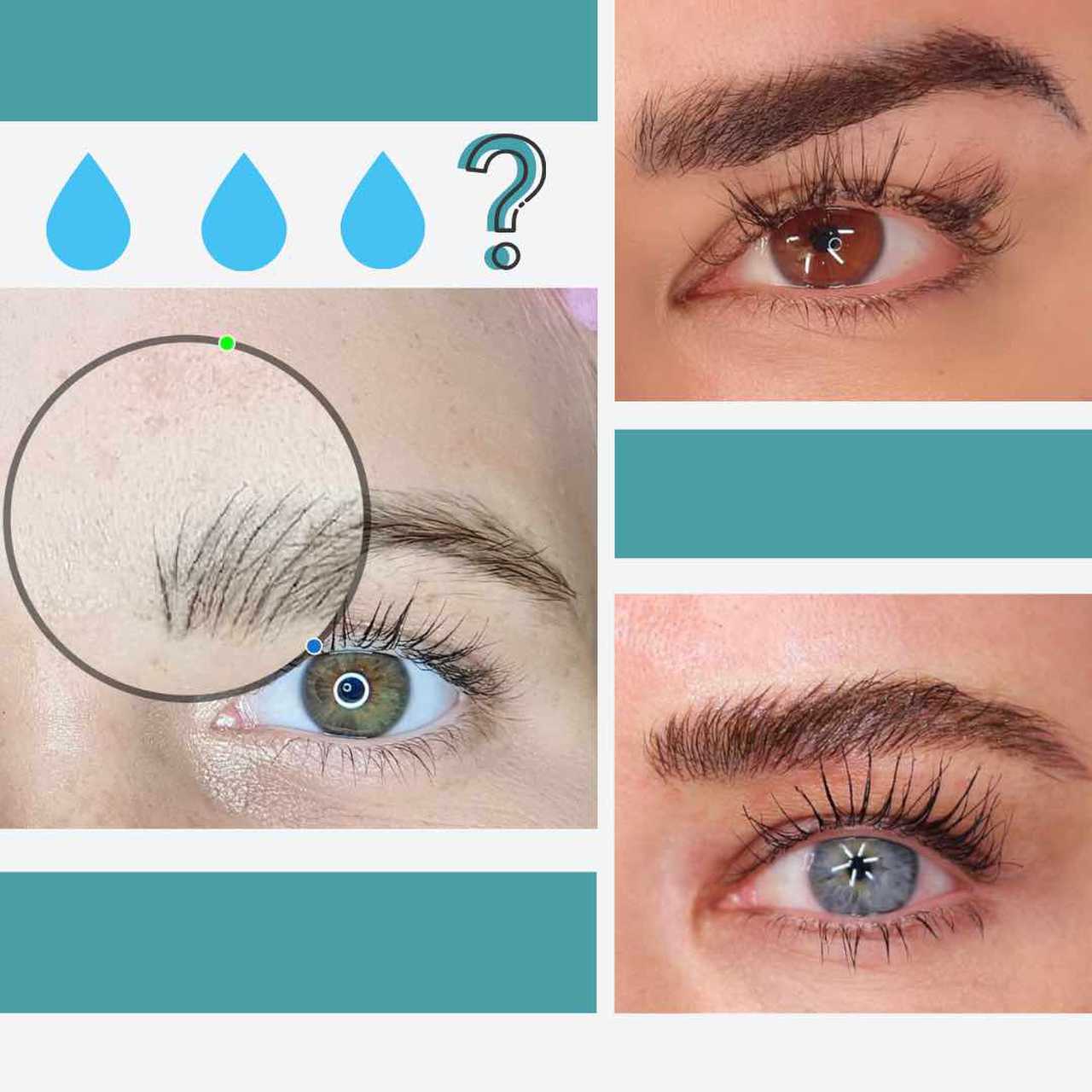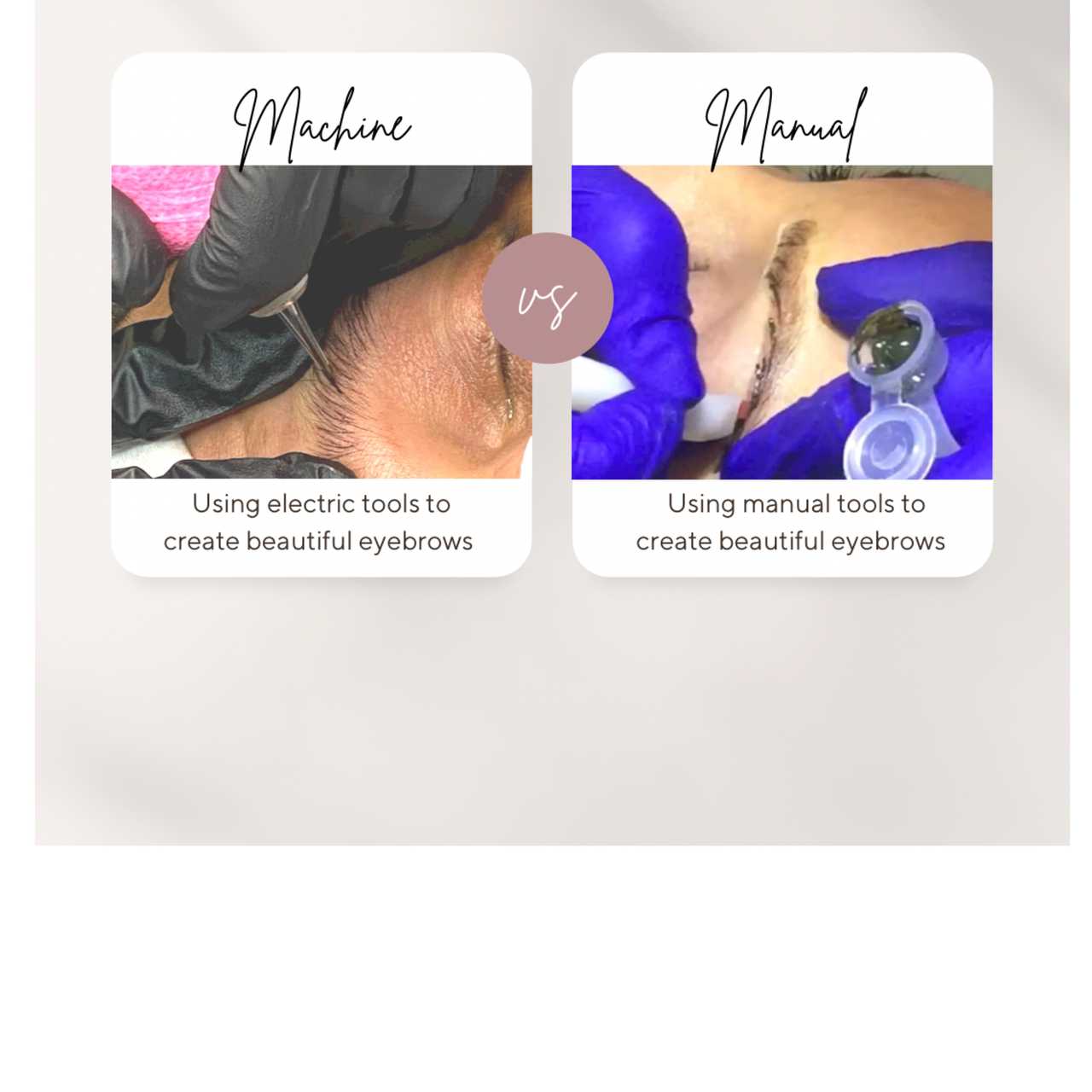With so many choices of microblading and PMU artists these days, It is easy to get lured in by cheaper prices and Groupon deals and forget about the quality of the actual pigments and inks being injected under the skin and into the bloodstream.
For example, you go to the hospital for a muscular pain. Do you let the nurse inject anything into your veins to make you feel better or do you ask him/her first “Hey, what are you injecting into my body now?”
By falling into the promise of “semi-permanent” makeup claims, clients don’t think much and often they don’t understand that they are, in fact, getting a tattoo on their face! A tattoo that may or may not fade with time. It doesn’t matter what the false claims are stated on the artists’ websites or social media profiles.
When purchasing food at the grocery store, nowadays most people are becoming more and more aware of harmful ingredients, such as: GMO soy, high-fructose corn syrup, MSG, palm oil, etc, added to their foods, by checking the ingredients on the labels. That helps them to avoid purchasing and consuming harmful stuff.
So why not follow the same protocol with the pigments and inks about to be injected into your bloodstream, into your skin by a tattoo, PMU or Microblading artist? If you ask the artist to show the label with their pigments ingredients, are you going to know how to interpret them and identify correctly? I don’t think so. But maybe, this post will help you to choose wisely next time.
Think of this post more as a “public service” to all people considering having Microblading or any other type of PMU done anywhere. Ask the artist to read the ingredients on the label of the pigments or inks about to be used on you and be alert about the following harmful chemicals:
- Titanium Dioxide.
Used as a white pigment color, it is also commonly presented in pigment labels as “CI 77891” or “PW6“. This pigment is used by some ink manufacturers to make the brown color “lighter” by adding white color. It heals horribly and fades unevenly. In some cases, it looks like yellowish spots, resembling of the “cottage cheese”. There are methods of making light brown pigment for blond or lighter brown eyebrows without Titanium Dioxide. Many premium, reliable and certified pigment manufacturers do them so you don’t have to settle for less.
Bear in mind, that while US FDA doesn’t approve or disapprove of tattoo or PMU/ Microblading pigments, in European Union countries, every manufacturer has to go through a rigorous certification process. This standard is called ResAP2018. That is why I highly recommend you to incline towards EU-certified pigments.
- DMDM Hydantoin
This is so bad! Stay away! Skin contact with DMDM hydantoin may result in irritation, itching, burning, scaling, eczema, reddening and blistering of the skin. Over time, allergic reactions to products with DMDM hydantoin may occur. It may also cause something as severe and lethal as skin cancer. It’s been banned in Japan and Sweden for use on cosmetics and toiletries (which are used on top of skin! Imagine the damage inside of it!)
- Isopropyl alcohol
Also known as rubbing alcohol, the alcohol you do NOT drink (because It is poison). It is used in the manufacture of a wide variety of industrial and household chemicals, and is a common ingredient in chemicals such as antiseptics, disinfectants, and detergents.
Isopropyl alcohol and its metabolite, acetone, act as central nervous system (CNS) depressants. Poisoning can occur from ingestion, inhalation, or skin absorption. Symptoms of isopropyl alcohol poisoning include flushing, headache, dizziness, CNS depression, nausea, vomiting, anesthesia, hypothermia, low blood pressure, shock, respiratory depression, and coma. Overdoses may cause a fruity odor on the breath as a result of its metabolism to acetone. Isopropyl alcohol does not cause an anion gap acidosis but it produces an osmolal gap between the calculated and measured osmolalities of serum, as do the other alcohols.
Isopropyl alcohol is oxidized to form acetone by alcohol dehydrogenase in the liver, and has a biological half-life in humans between 2.5 and 8.0 hours. Unlike methanol or ethylene glycol poisoning, the metabolites of isopropyl alcohol are less toxic, and treatment is largely supportive. Furthermore, there is no indication for the use of fomepizole, an alcohol dehydrogenase inhibitor, unless co-ingestion with methanol or ethylene glycol is suspected.
Sources:
"Guide to Local Production: WHO-recommended Handrub Formulations" (PDF). World Health Organization. August 2009
Slaughter RJ, Mason RW, Beasley DM, Vale JA, Schep LJ (2014). "Isopropanol poisoning". Clinical Toxicology. 52 (5): 470–8. doi:10.3109/15563650.2014.914527. PMID 24815348.
Kalapos, MP (2003). "On the mammalian acetone metabolism: from chemistry to clinical implications". Biochimica et Biophysica Acta. 1621 (2): 122–39. doi:10.1016/S0304-4165(03)00051-5. PMID 12726989.
"Isopropyl alcohol poisoning". www.uptodate.com. Retrieved 2017-10-10.
Record in the Household Products Database of NLM
DMDM Hydantoin at sci-toys.com
de Groot AC, van Joost T, Bos JD, van der Meeren HL, Weyland JW (1988). "Patch test reactivity to DMDM hydantoin. Relationship to formaldehyde allergy". Contact Dermatitis. 18 (4): 197–201. doi:10.1111/j.1600-0536.1988.tb02802.x. PMID 3378426.
http://beauinstitute.blogspot.com/2016/05/beware-white-is-your-enemy.html
https://www.marieclaire.com/beauty/makeup/a26949755/semi-permanent-makeup-cosmetic-tattoo/






